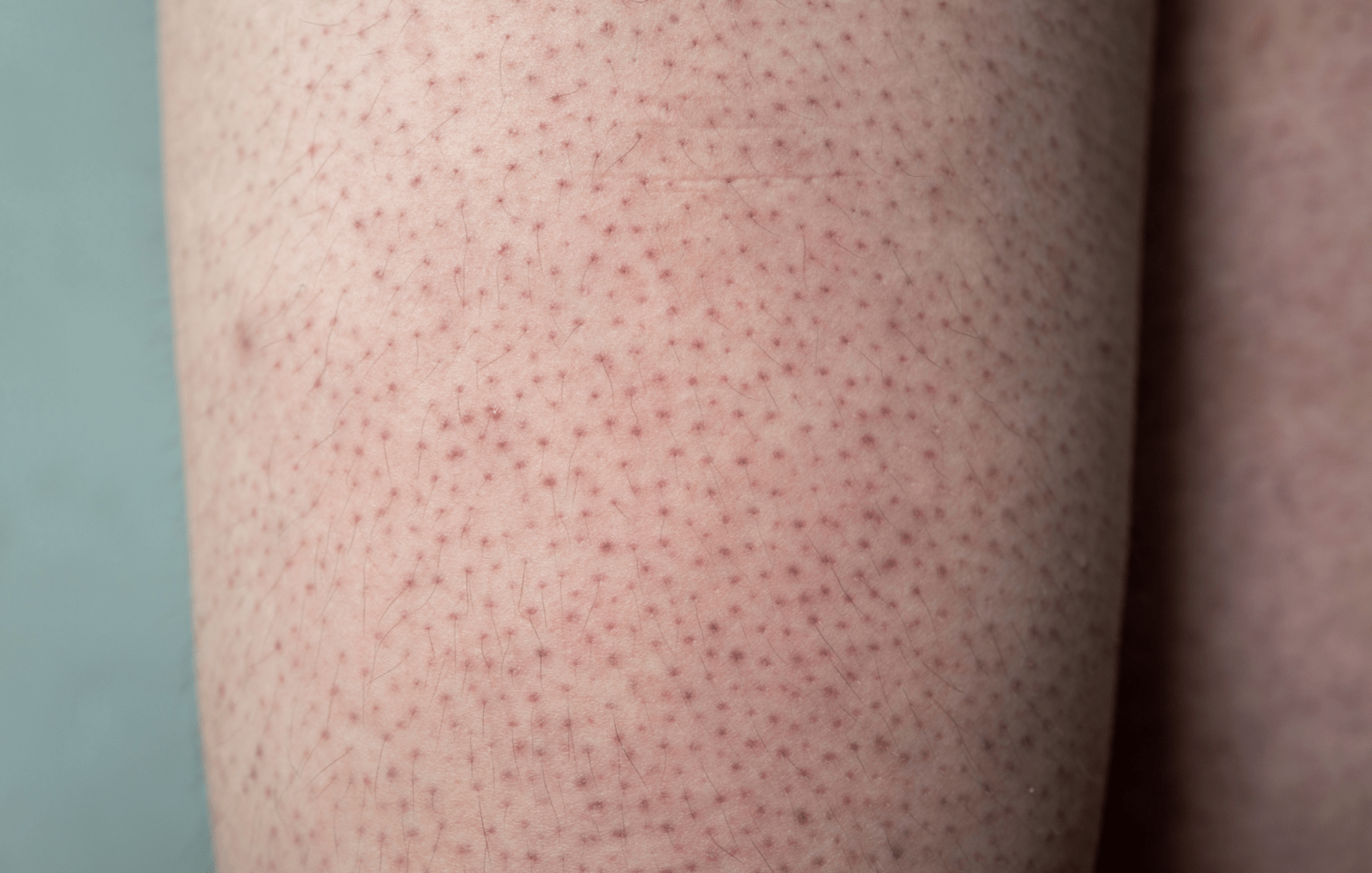Keratosis Pilaris 101: What It Is and How to Manage It
Ever run your fingers over your arms and felt an odd, sandpaper-like texture? If so, you might be one of the millions dealing with keratosis pilaris (KP), a skin condition that’s both common and often misunderstood. But what exactly is KP, and why does it make your skin feel like a “goosebump” factory? Let’s dive into the world of KP and uncover the mysteries behind this peculiar skin condition.
The Mystery of Keratosis Pilaris
Keratosis pilaris (KP) might sound like a high-tech skincare term, but it’s actually quite simple. Picture tiny, rough bumps on your skin that resemble goosebumps, even when
you’re not cold. KP occurs when a protein called keratin builds up and clogs your hair follicles. It’s like your skin’s way of saying, “I’ve got too much keratin here; let’s keep it all
in one spot!”
Why Do We Get KP?
You might be wondering, “Why me?” Here are a few factors that contribute to KP:
1. Genetics: If KP runs in your family, there’s a good chance you might have it too. Think of it as a hereditary gift—though not one you’d necessarily choose!
2. Keratin Overload: Keratin is a natural protein in your skin that helps protect and strengthen it. When it builds up too much, it can block hair follicles, leading to those pesky
bumps.
3. Skin Dryness: Dry skin can make KP more noticeable. When your skin lacks moisture, the rough texture of KP can become more pronounced.
Spotting KP: What Does It Look Like?
KP often presents itself in specific areas and in particular ways:
- Location: Commonly found on the upper arms, thighs, buttocks, and sometimes cheeks.
- Texture: The bumps feel rough, like sandpaper, and can be flesh-colored, white, or red.
- Size: Each bump is small, but they can cluster together to create a noticeable texture
The Upside of KP: It’s Totally Harmless!
While KP can be frustrating and might impact your confidence, the good news is that it’s harmless. It doesn’t lead to serious health issues and is not contagious. In most cases, KP
is more of a cosmetic concern than a medical one.
Tips and Tricks for Managing KP
Managing keratosis pilaris doesn’t require a full-scale skincare overhaul. Here are some tips to help smooth out those bumps:
-
- Exfoliation: Regular exfoliation can help remove dead skin cells and prevent keratin buildup. Opt for gentle exfoliants with ingredients like alpha-hydroxy acids (AHAs) or beta-
hydroxy acids (BHAs). - Moisturize: Keep your skin hydrated with rich, emollient moisturizers. This can help reduce the rough texture and prevent dryness, which can make KP worse.
- Avoid Irritants: Steer clear of harsh scrubs or irritating skincare products. These can exacerbate KP and lead to more inflammation.
- Topical Treatments: At Mckenzies Compounding Chemist, we have created a cream that helps exfoliate your skin to reduce the bumps formed as a result of excess keratin. This topical cream contains Lactic Acid and Salicylic Acid which helps to exfoliate the skin more effectively than most regular scrubs.

- Exfoliation: Regular exfoliation can help remove dead skin cells and prevent keratin buildup. Opt for gentle exfoliants with ingredients like alpha-hydroxy acids (AHAs) or beta-
How to use: Apply to the affected areas once daily, ideally at night, followed up with a moisturiser. It’s also recommended to use sunscreen and wear protective clothing throughout the day to protect your skin.
Embrace Your Skin: KP and Self-Acceptance
Living with keratosis pilaris can be challenging, especially when dealing with unwanted texture or appearance. However, it’s important to remember that KP is a common
condition and doesn’t define your beauty or worth. Embracing your skin and focusing on what makes you unique can help shift your perspective.
Final Thoughts
Keratosis pilaris may seem like a small skin issue, but understanding it better can make a big difference in how you manage it. With the right approach and a touch of self-
acceptance, you can navigate the bumps on your skin with confidence and ease.
Remember, your skin’s uniqueness is part of what makes you—well, you!
For more information, we have listed some below for your convenience:
https://dermnetnz.org/topics/keratosis-pilaris
https://www.healthdirect.gov.au/keratosis-pilaris
https://www.nhs.uk/conditions/keratosis-pilaris/
https://www.aad.org/public/diseases/a-z/keratosis-pilaris-overview

